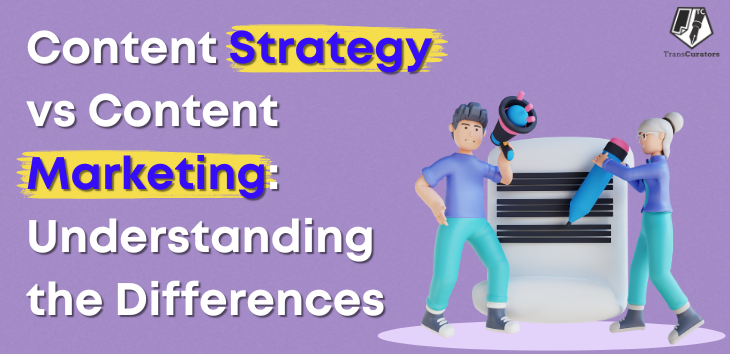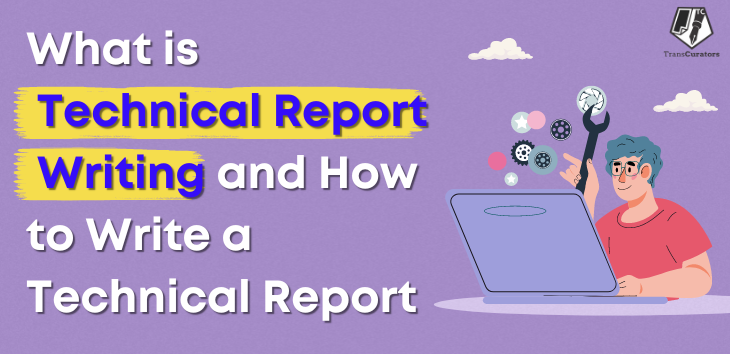
In today’s digital world, businesses often struggle to distinguish content strategy from content marketing. Although the two terms are occasionally employed together, they apply to distinct but complementary aspects of a solid online presence. Content strategy includes thorough planning and governance, which lays the foundation for relevant and consistent content. In contrast, content marketing focuses on the strategic execution and distribution of content to engage and convert audiences. Understanding these key distinctions is critical for organisations aiming to maximise digital impact. In this blog, we’ll analyse each to understand their unique responsibilities and how they contribute to your digital presence. Are you ready to venture further? Let’s explore the nuances and see how mastering both can rocket your business to new heights.
Content Strategy Vs Content Marketing: Key Distinctions
Content strategy and content marketing serve different purposes in content creation and distribution, and understanding their differences is crucial for effective digital communication.
Content strategy aims to plan and manage content throughout its life cycle. It entails research, goal planning, content development, and ensuring the content is consistent with the company’s general objectives. Content strategists look at the big picture when evaluating what type of content needs to be created, why it’s necessary, and how it will be maintained and updated in the future. They focus on creating an outline to lead the content creation process, ensuring every content has a specific purpose.
Conversely, content marketing focuses on leveraging content to engage with a target audience, establish connections, and motivate a desired action—like purchasing a product or signing up for a service. Various content types, including blog posts, social media updates, videos, and infographics, are used to execute the content strategy and attract and retain customers. Distribution and marketing are content marketers’ main concerns, and they ensure that the correct content reaches the right audience through the proper channels at the right time.
Content strategy develops the framework and direction for your content operations, whereas content marketing executes that plan. A good content strategy can transform dispersed content marketing efforts into profitable ones. Similarly, content marketing is necessary for the most effective content strategy to reach and engage the audience. Content strategy is the planning and management that drives content development, whereas content marketing is the implementation and promotion of content that meets specific marketing objectives. Content strategy sets the foundation and direction, while content marketing performs the plan to increase engagement and conversions. Understanding the difference allows for better management of both processes, resulting in overall business success.
What’s the Difference Between Content Strategy and Content Marketing?
What is content strategy?
Content strategy is like a blueprint for your content operations. It is the planning and management of every content that you create. Think of it as your game plan. Before you begin crafting content, you have to have a strategy ready to ensure that your efforts align with your business goals and satisfy the requirements of your target audience. Here are some essential aspects of content strategy:
1. Audience Understanding:
- Identifying Who You Are Creating Content For Knowing your audience is the first step. This involves understanding their demographics, preferences, pain points, and behaviours.
- Develop Personas: Create detailed profiles of your target audience to guide content creation.
2. Setting Clear Goals:
- Define Objectives: Determine what you want to achieve with your content. Common goals include brand awareness, lead generation, customer engagement, and driving sales.
- Align with Business Goals: Ensure your content objectives support broader business goals.
3. Content Planning and Research:
- Keyword Research: Identify relevant keywords and topics your audience is searching for.
- Competitive Analysis: Understand what competitors are doing and find gaps you can fill.
- Content Themes and Topics: Decide on the main themes and specific topics your content will cover.
4. Content Formats and Channels:
- Determine Formats: Decide whether you will create blog posts, videos, infographics, podcasts, or other formats.
- Choose Distribution Channels: Select the platforms where you will publish your content, such as your website, social media, email newsletters, and third-party sites.
5. Editorial Calendar:
- Plan Content Production: Create a schedule that outlines when and where each piece of content will be published.
- Set Deadlines: Assign deadlines to ensure timely content creation and publication.
6. Brand Voice and Tone:
- Define Your Voice: Establish a consistent voice and tone that aligns with your brand identity.
- Create Guidelines: Develop style guides to ensure consistency across all content.
7. Metrics and Evaluation:
- Measure Success: Determine which metrics will help you measure the effectiveness of your content (e.g., traffic, engagement, conversions).
- Regular Review: Continuously assess your content performance and adjust your strategy as needed.
Content strategy is organising and setting up a framework for your content efforts. It serves as a road map to guarantee that your content is consistent with the business’s objectives and satisfies the needs of your audience.
Content Strategy Example:
Imagine you own a small fitness studio named “FitZone.” Recognizing the need to attract and retain more members, you develop a thorough content strategy. First, you identify your target audience: health-conscious individuals, athletes, and locals wishing to improve physical fitness. Your strategies include writing a weekly blog on your website about training routines, dietary recommendations, and success stories from your members. You also build a presence on social media channels, regularly uploading motivating quotes, training videos, and customer transformation stories.
This content strategy is critical because it allows “FitZone” to display its fitness expertise, build trust from potential customers, and create a strong online presence. By continuously delivering excellent and relevant information, such as training suggestions and success stories, “FitZone” has proven itself as a knowledgeable fitness authority. This attracts new members while encouraging existing ones to remain engaged and motivated.
What is content marketing?
Content marketing refers to creating, distributing, and promoting content. It’s about taking the blueprint (your content strategy) and building something with it. It is the execution of the content strategy. The intent is to offer helpful information that solves problems or fulfils the needs of potential customers, ultimately encouraging them to take actions that benefit your business, such as purchasing a product or signing up for a service. Content marketing aims to attract, engage, and convert your target audience. Here’s how it works.
Know more- Content Marketing in Digital Marketing
1. Content Creation:
- Produce High-Quality Content: Create valuable, relevant, and engaging content for your audience.
- Follow the Strategy: Ensure the content aligns with the themes, topics, and formats outlined in your content strategy.
2. Content Distribution:
- Share Your Content: Publish your content on the selected distribution channels. This could include your website, social media, email newsletters, and third-party platforms.
- Optimise for SEO: Use keywords and SEO best practices to increase visibility in search engines.
3. Audience Engagement:
- Interact with Your Audience: Respond to comments, answer questions, and engage with your audience on social media and other platforms.
- Build a Community: Foster a community around your content to encourage repeat engagement.
4. Promotion:
- Boost Content Reach: Use paid advertising, influencer partnerships, and guest blogging to promote your content and reach a larger audience.
- Repurpose Content: Adapt and reuse content in different formats to extend its reach.
5. Conversion:
- Drive Actions: Encourage your audience to take desired actions, such as signing up for a newsletter, downloading a resource, or purchasing.
- Use Clear CTAs: Include clear calls-to-action (CTAs) in your content to guide your audience.
6. Analytics and Optimization:
- Track Performance: Monitor metrics like traffic, engagement, and conversions to assess content performance.
- Refine Your Approach: Use insights from analytics to refine and improve your content marketing efforts.
Content marketing aims to turn the content strategy into a reality successfully. It focuses on creating and marketing content that attracts and engages your intended audience, eventually driving them to take action.
Content Marketing Example:
For “FitZone,” setting up a content marketing campaign to promote a new personal training programme is critical. You must develop a series of helpful videos demonstrating the benefits of personalised workouts, testimonials from satisfied clients, and blog posts detailing your trainers’ qualifications. Besides that, you can collaborate with local fitness influencers who share their experiences with your training programme on social media.
This content marketing campaign promotes awareness and interest in “FitZone’s” new personal training programme. Using informative videos, client reviews, and influencer partnerships, “FitZone” educates potential clients about the benefits of personalised training while also establishing confidence and trust in its services. This strategic approach attracts new clients looking for personalised training services and strengthens “FitZone’s” status as a top fitness provider in the local community.
Why Are content Strategy and Content Markteing Essential?
A strong content strategy without content marketing is like having a plan but no action. On the other hand, content marketing without a plan is like acting without a plan. A successful content operation necessitates both. While marketing ensures that your content efficiently reaches and engages your audience, the strategy guarantees that your content efforts are intentional and align with your goals.
1. Synergizing Content Strategy and Marketing for Impact
Synergizing content planning and marketing yields a powerful approach that can significantly boost your business’s impact. By effectively integrating these two elements, you can reach the right people, offer relevant messages, and achieve your business objectives with greater success.
2. Integrating Content Strategy with Content Marketing
Integrating content strategy with content marketing guarantees that your content efforts are well-planned and executed. Begin by aligning your content strategy with your marketing objectives. For example, if you want to generate leads, write helpful content that answers your audience’s inquiries and guides them through the sales funnel. Blog posts, e-books, and webinars can be really useful tools.
3. Creating Consistent and Cohesive Messages
Consistency is a necessity when combining content strategy with content marketing. Your audience should get a cohesive message across all media. It means maintaining a consistent tone, style, and voice in your work. Whether it’s a blog post, social media update, or newsletter, your messaging should reflect your brand’s identity and values.
4. Utilising Multiple Channels
Several platforms must be utilised for content marketing to reach a larger audience. You can tailor content for various platforms by utilising your content strategy. A detailed blog post, for example, can be broken down into videos, infographics, and social media posts. This repurposing maximises your content’s reach and impact.
5. Measuring and Adjusting
Consistently monitoring the results of your work is essential for making sure the effectiveness of your strategy. Utilise analytics tools to monitor website traffic, engagement, lead generation, and conversion rates. These insights assist you in understanding what works and what needs to be improved. You can boost your content strategy and marketing synergy by continually refining your approach.
6. Building Trust and Relationships
When content marketing and strategy work together, businesses can establish stronger ties with their audience. High-quality, relevant content builds your brand’s authority in your industry while promoting reliability and trust. When your audience trusts your brand, they will likely engage with your content and grow into loyal customers.
7. Enhancing Customer Experience
A well-integrated content strategy and content marketing plan improves the entire customer experience. By continuously providing valuable content that addresses your audience’s wants and interests, you create an excellent experience that inspires them to return. This increases customer satisfaction, encourages word-of-mouth referrals, and expands your reach.
Synergizing content strategy with marketing results in a dynamic approach favouring business success. Understanding your audience, defining clear goals, maintaining consistency, using multiple platforms, tracking results, building connections, and improving customer experience can all help you make a significant impression that elevates your brand and enables you to achieve your goals.
Key Metrics To Measure Content Success
1. Website Traffic: One of the most significant metrics is website traffic, which indicates how many visitors your content attracts to your website. It represents the reach and visibility of your content among the target audience.
2. Engagement Metrics: Engagement metrics such as likes, shares, comments, and time spent on the page are important for determining how actively your audience engages with your content. Higher engagement typically signifies that your content is resonating with your audience and keeping them interested.
3. Conversion Rates: Conversion rates measure how well your content turns visitors into leads or customers. Whether it’s signing up for a newsletter, downloading a resource, or making a purchase, analysing conversion rates helps you to understand how your content affects desired behaviours.
4. SEO Performance: SEO metrics such as keyword rankings, organic search traffic, and backlinks are critical in determining how high your content ranks in search engine results. Improving these indicators increases your content’s visibility and organic traffic over time.
5. Social Media Metrics: Social media metrics, for example, follower growth, shares, and comments, can assist you in understanding how effectively your content connects with your target audience. They help you evaluate your social media presence and the success of your content in engaging followers.
6. Return on Investment (ROI): ROI determines the profitability of your content marketing efforts by comparing the cost of creating and advertising content to the revenue generated from it. It helps to justify content marketing spending by demonstrating their financial benefit.
7. Customer Feedback: Gathering qualitative feedback from customers via surveys, reviews, and comments allows you to better understand their opinions and satisfaction with your content. Positive feedback depicts content efficacy, whereas constructive criticism guides improvement.
Businesses that consistently monitor and analyse these essential metrics may optimise their content strategy, increase content performance, and achieve better success in engaging their audience, increasing conversions, and eventually achieving their business objectives. Each metric provides useful information about numerous aspects of content effectiveness, guiding strategic decisions for continuous improvement and growth.
Conclusion
Understanding the subtle distinctions between content strategy and content marketing is critical for any organisation to succeed in the digital world. While content strategy establishes the foundation by defining goals, audience targeting, and content planning, content marketing carries out this strategy through creation, distribution, and engagement. Businesses that smoothly incorporate both can develop captivating narratives that engage with their audience, which leads to meaningful interactions and achieving strategic goals. Explore how TransCurators can help you optimise your content strategy and marketing efforts today for long-term growth and impact. Partner with TransCurators today to elevate your content strategy and achieve impactful marketing outcomes.
Frequently Asked Questions
A1. It is possible but challenging; often, a team approach ensures both planning and execution are effectively managed.
A2. It amplifies content reach through paid ads, influencer partnerships, and other promotional activities.
A3. Content governance involves guidelines and workflows to ensure content quality and consistency.
A4. Content is shared across various platforms like social media, blogs, and email newsletters to reach the target audience.
A5. Understanding the difference ensures a cohesive approach where strategic planning supports effective content execution and engagement.



